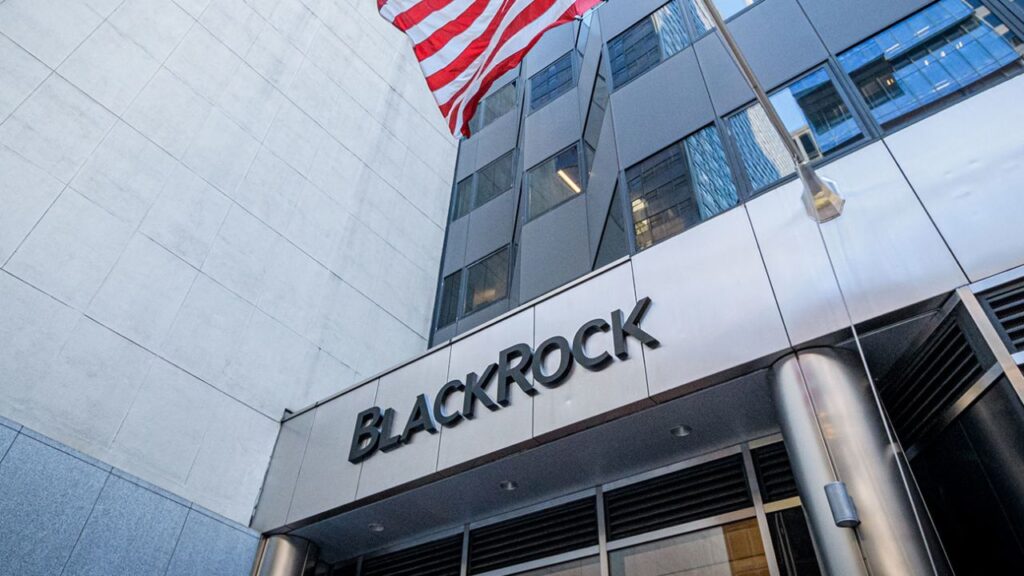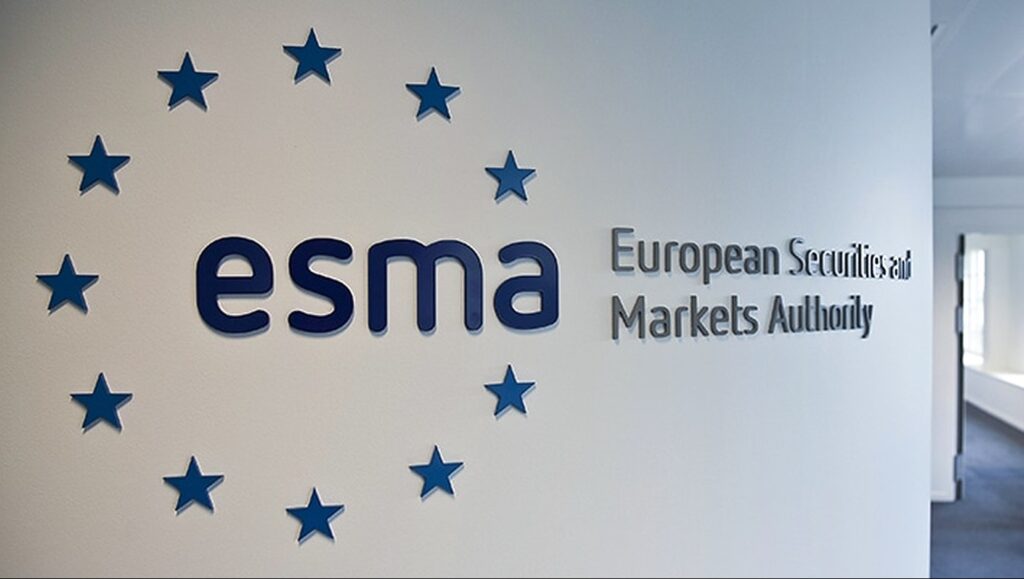The Financial Stability Board (FSB), an international organization responsible for overseeing the global financial system, has developed a comprehensive global regulatory framework for cryptocurrencies.
The guidelines have been presented to the G20, which represents the 20 leading economies worldwide. The framework is built on the principle of “same activity, same risk, same regulation.”
On July 17, the FSB released a public note and two separate guideline documents.
These documents comprise high-level recommendations for regulating cryptocurrencies in general, as well as revised recommendations specifically focused on “global stablecoins.”
The latter refers to stablecoins that have the potential for cross-jurisdictional usage.
The FSB emphasizes the importance of segregating clients’ digital assets from the funds of crypto platforms and maintaining clear functional separation to avoid conflicts of interest.
Cross-border cooperation and oversight by regulators are essential in ensuring the effectiveness of these measures.
While acknowledging the value of privacy, the FSB urges local regulators to ensure that activities related to decentralized finance (DeFi) protocols do not hinder the identification of responsible entities or affiliated entities.
READ MORE: Former SEC Official Criticizes Ripple Ruling as ‘Troublesome on Multiple Fronts’
The recommendations state that authorities should have access to necessary data to fulfill their regulatory and supervisory mandates.
Regarding global stablecoins, the FSB highlights the need for stablecoin issuers to establish a “governance body” consisting of identifiable and responsible legal entities or individuals.
Issuers are expected to hold reserve assets in a minimum proportion of 1:1 unless they are subject to prudential requirements equivalent to those imposed on commercial banks.
One notable addition to the guidelines is the potential requirement for global stablecoin issuers to obtain permits to operate in each jurisdiction.
The FSB states that GSC arrangements should not be permitted within a jurisdiction unless they meet all regulatory, supervisory, and oversight requirements, including obtaining affirmative approval.
The FSB plans to assess the worldwide implementation of its recommendations by the end of 2025.
In September 2023, in collaboration with the International Monetary Fund, it will submit a joint report on existing policies and regulatory issues to the G20.
In alignment with the FSB’s stance, the Association for Financial Markets in Europe recently urged European Union lawmakers to incorporate decentralized finance (DeFi) into the first EU-wide crypto framework, referencing the FSB’s position on the matter.
Other Stories:
Aave Launches GHO Stablecoin on Ethereum Mainnet
Primed For Major BTC Rally? SEC Begins Review of BlackRock’s Bitcoin ETF Application
Binance Integrates Bitcoin Lightning Network for Lightning-Fast BTC Transactions
According to recent on-chain data, the popular “buy” level for Bitcoin (BTC) is at $30,000, as indicated by the highest number of transactions occurring near this price point. Glassnode, a crypto analytics firm, monitors unspent transaction outputs (UTXOs) and reveals that the largest number of UTXOs were created at a price of $30,200.
To accurately reflect real purchasing events, the firm excludes coin movements between addresses controlled by the same entity and supply held on exchanges, which could distort the mean purchasing price.
The data suggests that there is significant demand for BTC at the $30,000 level, despite the current price action stalling. In fact, 3.8% of the total BTC supply was last moved at $30,200, surpassing even the volume moved at $16,500, which marked the area near the 2022 post-FTX bottom.
These findings have led some market participants, such as pseudonymous trader Mikybull Crypto, to anticipate a potential significant movement in the BTC price.
Furthermore, additional on-chain data supports the notion that long-term holders are uninterested in selling their BTC, despite the price doubling this year.
Glassnode’s Hodled or Lost Coins metric, which examines the “liveliness” of the Bitcoin blockchain, reveals that “old and large stashes” of BTC continue to reach new record highs.
This metric provides insights into the supply’s stagnancy and includes BTC that is likely to be inaccessible indefinitely, such as when owners lose access to their wallets.
Read our review of the best Crypto PR agencies
Currently, the Hodled or Lost Coins segment accounts for 7.77 million BTC, equivalent to approximately $233 billion.
This represents the highest tally in the past five years.
Previous estimates have suggested that around 20% of Bitcoin’s total supply of 21 million units may already be permanently locked from circulation.
In summary, the on-chain data indicates that the $30,000 level is the most popular “buy” level for Bitcoin, with a significant number of transactions occurring at this price.
Additionally, long-term holders are reluctant to sell their BTC, resulting in a stagnant supply. These insights provide valuable information for market participants and suggest that a significant price movement may be on the horizon.
Other Stories:
Investor Spends $1.04 Million on PEPE Coin as Ripple CEO Criticizes SEC in Landmark Case
ARK Invest Sells More Coinbase Shares, Expands Investments in Meta Platforms and Robinhood
Synthetix Expands DeFi Offering with Introduction of Infinex Derivatives Exchange
The United States Securities and Exchange Commission (SEC) has started reviewing BlackRock’s application for a Bitcoin spot exchange-traded fund (ETF), one day after acknowledging Bitwise’s similar submission.
This preliminary step marks the SEC’s readiness to evaluate the feasibility and market impact of a Bitcoin spot ETF, despite being the first phase of a complex regulatory process.
Exchange-traded funds or ETFs are investment products that often track specific indexes, and in the crypto context, they replicate the value of one or more digital assets and comprise a range of cryptocurrencies.
The SEC stated on July 14 that it’s reviewing multiple fund applications, including those from Wise Origin Bitcoin Trust, WisdomTree, VanEck, and Invesco Galaxy.
The financial industry considers BlackRock’s move to apply for a Bitcoin spot ETF noteworthy, given its market standing.
READ MORE: ARK Invest Sells More Coinbase Shares, Expands Investments in Meta Platforms and Robinhood
The application includes an agreement for surveillance-sharing with Coinbase, a leading cryptocurrency exchange.
The ongoing competition to debut a Bitcoin ETF in the U.S. is viewed positively in the crypto sector.
With several applications in progress, the likelihood of approval increases, as the SEC can evaluate diverse strategies and considerations.
Despite the developments, the SEC has not yet approved a Bitcoin spot ETF within the U.S. Meanwhile, Canada has already greenlit this type of financial product.
Purpose Bitcoin, 3iQ CoinShares, and CI Galaxy Bitcoin are three substantial funds that have received regulatory approval in Canada.
Other Stories:
Synthetix Expands DeFi Offering with Introduction of Infinex Derivatives Exchange
Eeon Intervenes in SEC Lawsuit Against Binance, Seeks Representation for Customers
Investor Spends $1.04 Million on PEPE Coin as Ripple CEO Criticizes SEC in Landmark Case
Binance, a popular cryptocurrency exchange, has successfully integrated the Bitcoin Lightning Network into its platform, enabling users to make BTC withdrawals and deposits using this layer-2 scaling solution.
In a blog post on July 17, Binance confirmed the development and highlighted the availability of the Lightning Network option for Bitcoin transactions, alongside other choices such as BNB Smart Chain, BNB Beacon Chain, BTC (SegWit), and Ethereum ERC-20.
The decision to integrate the Lightning Network came after Binance temporarily halted BTC withdrawals in May due to a surge in pending transactions caused by high network gas fees.
These fees were primarily driven by the emergence of memecoins in the form of BRC-20 tokens, which introduced a new token standard on the Bitcoin network.
READ MORE: Investor Spends $1.04 Million on PEPE Coin as Ripple CEO Criticizes SEC in Landmark Case
The integration of the Lightning Network was first hinted at by Binance in May, but it was officially announced on June 20 when users noticed Binance’s Lightning nodes.
Binance now joins the ranks of other prominent exchanges such as Bitfinex, River Financial, OKX, Kraken, and CoinCorner that have embraced this layer-2 scaling solution.
In April, Coinbase CEO Brian Armstrong expressed his intention to integrate the Bitcoin layer 2 network on Coinbase, but no specific timeline was provided.
The Lightning Network is designed to enhance the speed and cost-effectiveness of Bitcoin transactions by enabling users to establish off-chain transaction channels.
With the Lightning Network integration, Binance aims to provide its users with a more efficient and seamless experience when conducting Bitcoin transactions.
By leveraging this layer-2 scaling solution, users can enjoy faster and more cost-effective transfers, thereby addressing the challenges posed by high transaction fees and network congestion.
As the cryptocurrency industry continues to evolve, the adoption of technologies like the Lightning Network represents an important step towards improving the scalability and usability of cryptocurrencies.
The integration of this solution by Binance and other leading exchanges underscores the growing recognition of the Lightning Network’s potential to enhance the efficiency and accessibility of Bitcoin transactions, ultimately benefiting users across the ecosystem.
Other Stories:
Synthetix Expands DeFi Offering with Introduction of Infinex Derivatives Exchange
Eeon Intervenes in SEC Lawsuit Against Binance, Seeks Representation for Customers
ARK Invest Sells More Coinbase Shares, Expands Investments in Meta Platforms and Robinhood
The United States Securities and Exchange Commission (SEC) has taken a significant step in the potential approval of a spot Bitcoin exchange-traded fund (ETF).
BlackRock, a prominent financial firm, has had its application accepted by the SEC, following a similar acknowledgment of Bitwise’s application the previous day.
Accepting BlackRock’s proposal marks the beginning of the official review process for their ETF.
While this is just the initial stage of a lengthy regulatory journey, it signifies the SEC’s willingness to explore the concept of a spot Bitcoin ETF and evaluate its potential impact on the market.
ETFs are investment funds that typically track specific indexes and are commonly traded on exchanges.
In the realm of cryptocurrencies, a cryptocurrency ETF refers to a fund that mirrors the value of one or more digital tokens and encompasses a range of cryptocurrencies.
On July 14, the SEC also announced that it is currently reviewing applications for various funds, including Wise Origin Bitcoin Trust, WisdomTree, VanEck, and Invesco Galaxy.
READ MORE: Bitcoin Long-Term Holders Return as BTC Price Surges
BlackRock’s participation in the race to launch a spot Bitcoin ETF holds great significance due to its stature in the financial industry.
Their filing for a spot Bitcoin ETF includes an agreement for “surveillance-sharing” with Coinbase, a prominent cryptocurrency exchange.
The competition among companies striving to be the first to introduce a Bitcoin ETF in the United States is viewed as a positive development for the crypto industry.
With multiple applications being considered, the chances of success increase, and the diverse proposals allow the SEC to evaluate different strategies and concerns.
While the SEC has not yet approved a spot Bitcoin ETF in the United States, such financial products are already available in Canada.
Regulators in the country have approved three significant funds: Purpose Bitcoin, 3iQ CoinShares, and CI Galaxy Bitcoin.
The acceptance of BlackRock’s application and the ongoing review process for other ETF proposals indicate a growing recognition of the potential of cryptocurrencies in the mainstream financial sector.
As the SEC continues its evaluation, the market eagerly awaits the decision on the first spot Bitcoin ETF in the United States.
Other Stories:
Coinbase Temporarily Suspends Staking Services
SEC Stresses Crucial Clarification Amid Coinbase Battle
Cardano Surges 23.9% Following Favorable XRP Ruling, Investors Eye Further Gains
Bitcoin (BTC) long-term holders are reemerging as the price of BTC continues to climb, according to the latest analysis.
On July 13, Philip Swift, the creator of on-chain data resource LookIntoBitcoin, highlighted the classic behavior of “older” BTC investors during bull markets.
Despite the ongoing debate about how high BTC’s price could ultimately reach in this current cycle, one thing remains clear: Hodler behavior remains consistent.
The increase in BTC/USD, which has more than doubled in 2023, has resulted in an uptick in on-chain spending velocity, indicating profit-taking activities.
Swift shared a chart of the Value Days Destroyed (VDD) Multiple, a metric based on the Coin Days Destroyed (CDD) indicator.
The VDD measures the inactivity period each time BTC moves on-chain and compares it to the current BTC price, providing a 30-day result compared to the 365-day average.
READ MORE: Ripple’s XRP Victory Against SEC: A Blow to Regulator’s ‘War on Crypto’
The chart shows that the current cycle aligns closely with previous cycles in terms of on-chain spending volume, indicating where we are in the current market cycle.
Swift explains that the VDD Multiple highlights when older coins begin entering the market for sale as long-term participants seek to capitalize on the price increase during major bull market cycles.
The VDD Multiple currently stands at 1.32, just below its peak of 1.37 in April 2023. Swift sees this as a sign of the “1st stage bull market.”
Checkmate, the lead on-chain analyst at Glassnode, praised the findings, emphasizing the remarkable consistency of market cycles and human reactions to similar stimuli.
Moreover, data from Glassnode highlights the temptation for hodlers to cash out at current prices. Bitcoin’s market-value-to-realized-value (MVRV) ratio for long-term holders (LTHs) and short-term holders (STHs) indicates that both groups are significantly in profit.
LTH coins, defined as dormant for at least 155 days, are now worth 1.52 times more than when they were last moved, while STH coins show a value increase of 1.12.
Previous reports have already highlighted the influence that STHs have on BTC price action.
With both long-term and short-term holders in profitable positions, it remains to be seen how these trends will impact BTC’s price movement going forward.
The consistent behavior of BTC hodlers in response to market conditions suggests that this cycle is following a similar pattern to previous ones.
Other Stories:
Monochrome Asset Management Proposes Bitcoin ETF on ASX
Worldcoin’s World ID Project Surpasses 2 Million Users
OpenAI Faces FTC Investigation Over Privacy and Data Practices
Steven Kinard, the director of Bitcoin mining analytics at the Texas Blockchain Council, a crypto advocacy group, has announced his candidacy for the Texas House of Representatives.
Kinard revealed his plans on July 11, stating his intention to seek the Republican Party nomination for Texas House District 70 in the Dallas-Fort Worth area.
If elected, he would serve a two-year term starting in 2025. Prior to joining the Texas Blockchain Council in March 2022, Kinard had worked for approximately three years at BOK Financial.
In his campaign, Kinard expressed his commitment to promoting “digital freedom” and advocating for “strategic technology investments.”
He is expected to compete against the incumbent Democratic Representative, Mihaela Plesa, who has been serving in the Texas House since 2023.
One of Kinard’s key points of criticism is directed at the Federal Reserve for its attempts to launch a central bank digital currency (CBDC), which he considers a reckless move.
This sentiment aligns with that of other Republican lawmakers, including Florida governor and 2024 presidential candidate Ron DeSantis.
READ MORE: Elon Musk Launches xAI: A New Venture to Unravel the Mysteries of the Universe
Kinard’s campaign website states his intention to actively resist and prevent any research into CBDCs.
Texas, particularly the capital city of Austin, has emerged as a significant hub for cryptocurrency mining activity, especially after the departure of many miners from China.
While a bill aimed at limiting incentives for crypto miners was passed by the Texas State Senate in April, the government has also shown support for incorporating crypto into the state’s Bill of Rights.
Governor Greg Abbott has openly identified himself as a supporter of crypto law proposals.
As the 2024 United States primaries approach in the following months, the crypto and blockchain industry has become a prominent issue for many voters.
Coinbase CEO Brian Armstrong has urged crypto users to support pro-crypto candidates in all 435 U.S. congressional districts, emphasizing the importance of electing officials who understand and advocate for effective legislation to regulate digital assets.
Other Stories:
United States DoJ Moves $299 Million Worth of Bitcoin in Recent Transactions
Bitcoin ETF Approval Could Act as Government’s ‘Seal of Approval’
The determination of prices in any market, whether it’s for goods or financial assets, relies on the interplay between supply and demand.
When there is a scarcity of a product like tomatoes due to a flood, the price at the supermarket will naturally be higher, assuming the demand remains the same.
Similarly, if there is a fixed supply of tomatoes but an increased number of people wanting to buy them, the price will also rise.
In the financial market, the price of a mutual fund is unaffected by demand if the supply is unlimited.
In such cases, additional shares are simply issued at the net asset value (NAV) of the fund, which represents its true value based on its assets.
However, if the available shares are limited, the price will fluctuate based on the uneven supply and demand.
In such situations, the price may deviate from its intrinsic value, especially when an asset is in high demand.
Estimating the correct price of an asset can be challenging. In 2021, the author published data attempting to estimate the fair value price of Bitcoin.
By analyzing the number of wallets in circulation and the average amount held in each wallet, the author derived an estimation of Bitcoin’s capitalization and price.
READ MORE: United States DoJ Moves $299 Million Worth of Bitcoin in Recent Transactions
The transparency provided by the blockchain technology enables the collection of reliable information, such as tracking the number of Bitcoin addresses with non-zero balances.
The graph illustrating the average amount in wallets fluctuates due to supply and demand factors.
By considering the 90th and 10th percentiles, a range can be established to estimate Bitcoin’s price.
This approach, although simple, proves effective due to the large numbers involved and a complete price cycle analysis.
Additionally, certain market phenomena provide insights into Bitcoin’s potential price appreciation.
For example, during the last days of a crypto winter, there is often an increase in withdrawals from crypto exchanges and a decrease in balances held on centralized platforms.
This indicates a preference for long-term Bitcoin holdings, signaling bullish sentiment and contributing to cyclical price appreciation.
Based on this model, the data suggests that Bitcoin could reach its next ceiling in autumn 2025, potentially exceeding $130,000.
It is crucial to emphasize that this forecast should not be considered financial advice, but rather an expected value based on certain assumptions with a degree of confidence.
Other predictive models also support similar price growth estimates.
The growing interest in the asset class from institutional players like BlackRock further suggests a level of faith in these models, as evidenced by their pursuit of approval for a spot Bitcoin exchange-traded fund.
Other Stories:
Elon Musk Launches xAI: A New Venture to Unravel the Mysteries of the Universe
Bitcoin ETF Approval Could Act as Government’s ‘Seal of Approval’
Monochrome Asset Management, a crypto investment firm based in Australia, has made an update to its application, aiming to introduce a spot Bitcoin exchange-traded fund (ETF) on the Australian Securities Exchange (ASX) in collaboration with Vasco Trustees.
The newly proposed ETF, called the Monochrome Bitcoin ETF, will provide direct exposure to Bitcoin and Ether (ETH) for retail investors in Australia, as stated in the company’s announcement on July 14.
Monochrome CEO Jeff Yew explained in an interview with Cointelegraph that the Bitcoin ETF would allow Australian retail investors to engage with Bitcoin in a regulated environment, offering them the freedom to utilize this asset class as they see fit while operating within the established regulatory framework.
Yew emphasized the advantage of investor protection that comes with a regulated ETF, in contrast to unregulated exchanges where such safeguards may be lacking.
Yew further expressed his belief that the introduction of a Bitcoin ETF on the ASX would convey a significant message to traditional investors, signaling the end of the unregulated “Wild West” phase.
The ETF’s existence would assure investors of a familiar, structured, and protected environment, enhancing their confidence in the crypto market.
READ MORE: Bitcoin ETF Approval Could Act as Government’s ‘Seal of Approval’
Vasco, Monochrome’s “Responsible Entity Partner,” holds the necessary authorization under an Australian Financial Services Licence to offer regulated exposure to cryptocurrencies to retail investors, as outlined by the company.
Spot Bitcoin ETF applications have garnered considerable attention in the industry recently, particularly in the United States.
Over the past few weeks, major financial firms such as Fidelity, Invesco, Wisdom Tree, Valkyrie, and the $10 trillion asset management giant BlackRock have all submitted filings for spot Bitcoin ETFs, indicating growing interest in providing regulated exposure to digital assets.
The introduction of a Bitcoin ETF on the ASX through Monochrome Asset Management’s application update marks a significant step toward facilitating mainstream adoption and regulatory acceptance of cryptocurrencies in Australia.
Other Stories:
United States DoJ Moves $299 Million Worth of Bitcoin in Recent Transactions
Elon Musk Launches xAI: A New Venture to Unravel the Mysteries of the Universe
Binance’s BNB Beacon Chain Set to Halt New Block Production in Upcoming Hard Fork for Enhanced
The European Securities and Markets Authority (ESMA), the regulatory body for financial markets in the European Union, has released a consultative paper on Markets in Crypto-Assets (MiCA) mandates.
This paper, which is the first of three consultative packages, focuses on the technical specifications for crypto asset service providers (CASPs).
Under MiCA, entities that are already licensed are presumed to be capable of providing crypto-asset services.
However, they will be required to provide additional information to the national competent authorities (NCAs) of their respective countries through notifications.
The consultative paper seeks feedback on regulatory and technical standards for these notifications from CASPs.
ESMA is also seeking feedback on regulatory and technical standards related to CASP authorization applications, handling complaints, managing and preventing conflicts of interest, and disclosures to NCAs by entities planning to acquire shares in a CASP.
READ MORE: US Senate Committee Seeks Input on Taxation of Digital Assets
Interested stakeholders and market participants have until September 20 to respond to the consultative paper.
ESMA plans to submit a draft of the finalized standards to the European Commission by June 30, 2024, as mandated by MiCA.
The second consultative package will be released in October, followed by the third in the first quarter of 2024, aligning with the deadlines set for ESMA in MiCA.
In addition to specific feedback, ESMA has posed four general questions to respondents.
These questions aim to gather more insight into the current and planned activities of market participants and their expectations for the future development of the EU crypto-asset markets.
The questions cover topics such as expected turnover, the number of white papers respondents plan to publish, and their utilization of on-chain and off-chain trading.
MiCA, approved by the European Parliament on April 20, will be implemented in three stages between 2024 and 2025.
It represents a comprehensive regulatory framework for crypto assets within the European Union. The consultation process conducted by ESMA is an important step in shaping the technical standards and guidelines that will govern the operation of CASPs under MiCA.









